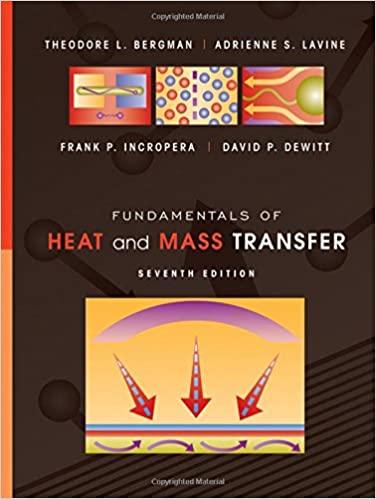For health reasons, public spaces require the continuous exchange of a specified mass of stale indoor air
Question:
For health reasons, public spaces require the continuous exchange of a specified mass of stale indoor air with fresh outdoor air. To conserve energy during the heating season, it is expedient to recover the thermal energy in the exhausted, warm indoor air and transfer it to the incoming, cold fresh air. A coupled single-pass, cross-flow heat exchanger with both fluids unmixed is installed in the intake and return ducts of a heating system as shown in the schematic. Water containing an anti-freeze agent is used as the working fluid in the coupled heat exchange device, which is composed of individual heat exchangers A and B. Hence, heat is transferred from the warm stale air to the cold fresh air by way of the pumped water.

Consider a specified air mass flow rate (in each duct) of m = 1.50 kg/s, an overall heat transfer coefficient–area product of UA = 2500 W/K (for each heat exchanger), an outdoor temperature of Tc,i,A = –4°C and an indoor temperature of Th,i,B = 23°C. Since the warm air has been humidified, excessive heat transfer can result in unwanted condensation in the ductwork. What water flow rate is necessary to maximize heat transfer while ensuring the outlet temperature associated with heat exchanger B does not fall below the dew point temperature, Th,o,B = Tdp = 13°C?
Step by Step Answer:

Fundamentals Of Heat And Mass Transfer
ISBN: 9780470501979
7th Edition
Authors: Theodore L. Bergman, Adrienne S. Lavine, Frank P. Incropera, David P. DeWitt





